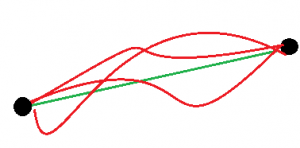
- Which assumptions are important, and how much they affect research results,
- How changes in methods, models, or the values of unmeasured variables affect results.
Sensitivity analysis is also known as “what-if” analysis; It focuses on what happens to the dependent variable when various parameters change. It is important in all fields of scientific and statistical research.
Purposes of Sensitivity Analysis
Sensitivity Analysis can help you to find important connections between:
- Model inputs,
- Predictions and forecasts,
- Observations.
It gives you a way to locate sensitive parameters (i.e. those that have a great effect on the model). In addition, it can help you to identify non-sensitive parameters. This means that it may help you simplify models, by eliminating:
- Input variables which have no real affect on the data,
- Redundant structures.
Unexpected relationships between parameters and results can point to errors in your model. Sensitivity analysis can also help you redesign your experiments; as you find which parameters are most sensitive, you can redesign the experiment to decrease uncertainty in that parameter.
One-at-a-time (OAT or OFAT) Analysis
One-at-a-time analysis (also known a one-factor-at-a-time, or OFAT, analysis)is one of the simplest ways to analyze a model.
- All but one variable are kept at a baseline;
- That single variable is varied while new readings are taken.
- Next, the test variable is returned to its baseline value, and another reading is taken.
- Each parameter is tested in this way one at a time.
The weak point of this method is that, in focusing on each variable individually, it doesn’t make allowances for interaction between variables. It also doesn’t pinpoint joint effects; effects which might happen when several variables change simultaneously.
References
Daniels, M. & Hogan, J. Missing Data in Longitudinal Studies.
Pannel, David. Sensitivity analysis: strategies, methods, concepts, examples. Modified from Pannell, D.J. (1997). Sensitivity analysis of normative economic models: Theoretical framework and practical strategies, Agricultural Economics 16: 139-152. Retrieved from http://dpannell.fnas.uwa.edu.au/dpap971f.htm on July 5, 2018
Financial Modeling Techniques: Sensitivity Analysis (“What if” Analysis). Retrieved from https://www.wallstreetprep.com/knowledge/financial-modeling-techniques-sensitivity-what-if-analysis-2/ on July 5, 2018.
Thabane et al, A tutorial on sensitivity analyses in clinical trials: the what, why, when and how. BMC Medical Research Methodology201313:92
https://doi.org/10.1186/1471-2288-13-92. Retrieved from https://bmcmedresmethodol.biomedcentral.com/articles/10.1186/1471-2288-13-92 on July 5th, 2018